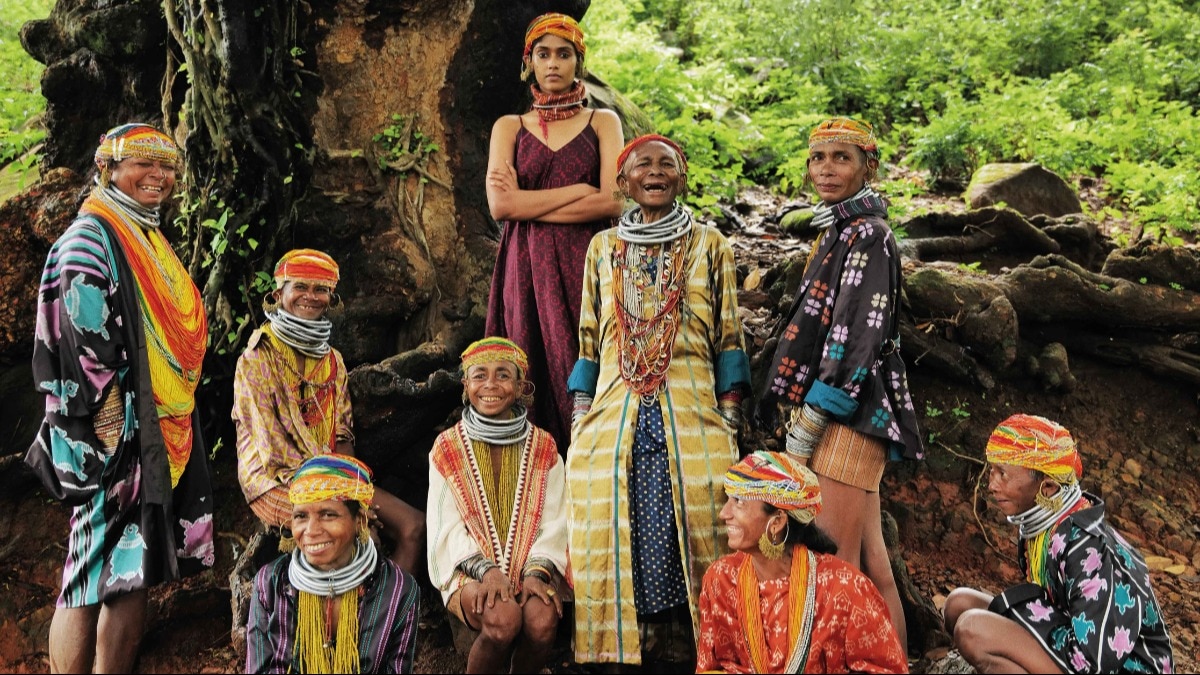
A journey into the world of Odisha’s timeless Khandua sari
Bazaar India takes a trip to the birthplace of the traditional weave with the newly launched fashion label, Boito.


A two-hour drive from Bhubaneshwar leads to Nuapatna in Cuttack, where massive frames of tied fabric, ivory curtains of drying yarn, and rows of vivid sari-wrapped poles welcome you at every corner. I am here with a group of other journalists hosted by Boito, a new label by Bengaluru-based Richa Maheshwari who is on a mission to spotlight Odisha’s diverse textile crafts, including Khandua—the silk fabric the town is known and GI-tagged for.
Coincidentally, my first sari was a tomato-red and black Khandua, a way to connect with my Odia roots. Richa’s enchantment with the region’s textiles began in a similar vein. The former product engineer decided to travel to the most remote parts of her home state in June 2022, Nuapatna being one of them, which led to the inception of Boito. This is where she first met Lakshmidhara Guin, the weaver who took us on a tour of the village. Richa says that while he was initially sceptical of coming on board, his vision for keeping the dying handloom traditions alive won in the end.
Khandua also goes by Maniabandha or Kataki and is a form of ‘bandha’ or ‘ikat’, the technique of resist-dying yarn. Richa explains that the word “Khandua” translates to “lower cloth”, referring to its usage as a covering for the lower half of Lord Jagannath’s deity. Beyond religion, it is an important cultural marker too—Khandua saris are a staple in wedding trousseaus.
The luminous silk is woven deep into the historical fabric of the region. As per a 2008 project by the Ministry of Commerce and Industry, the earliest mention of Khandua is in the “Madala Panji”, a 12th-century chronicle of Lord Jagannath, which explains its use in the religious context even today. According to the temple text, celebrated poet Jaydev used the tie and dye fabric as a medium to write the Gita Govind that he later presented to Lord Jagannath, Balabhadra, and Devi Subhadra. But it wasn’t until Puri’s king Ramachadradeva’s rule in 1719 did Khandua become associated with the town of Nuapatna. Inspired by the story of Jaydev, the king commissioned the town’s weavers to make Khandua, specifically for Lord Jagannath. Today, the town is a collaborative space with the whole community involved in the Khanduacrafting process.

Making Khandua is a laborious journey. Women first coax out spools of silk thread from mulberry silkworms sourced from Chhattisgarh. Next, a round of making, treating, and dying the yarn makes it ready for tying. Large frames of fabric take up almost the entirety of living rooms and front porches, with men sitting crosslegged deftly tying thread and knots to prepare it for resist-dying, so fast that the step seems like a blur, belying the skill it takes.
After another round of dying using a mix of natural and artificial pigments, the knots are removed and the fabric is dried for the final step of weaving, most of which are saris. The flying shuttle loom is common, with a few using pit looms that are embedded in custom depressions made on the floors of the houses. Once the saris are ready, they are treated to ensure the durability of both the dye and the fabric, and wrapped onto long bamboo poles that are left to dry propped up against walls. The variety is astonishing—almost no sari looks alike and comes in myriad shades and patterns.
Khandua is known as much for its motifs as for its signature ikat design. Brightly-coloured elephants, deer, and local flora like palash come to life on the silk canvas, so do fish and turtles, given the town is only a few hours away from the coast. In Boito’s collection, the same motifs adorn a reimagined silhouette, with files of large vibrant turtles crawling on pleated blazers and flowy kimonos.
Boito’s vision to both revive and modernise Odisha textiles without compromising on the essence or wisdom of generations of craftsmanship extends from Khandua to Kapagandha of the Dongria tribe and Ringa, a loincloth worn by the Bondas. While handloom makes up almost 22 per cent of the total cloth produced in the country, the rise of fast fashion catalyses the industry’s struggles with the lack of technology, less productivity, and access to market. Textile-focused brands like Boito hope to change that, one thoughtfully-crafted garment at a time.










